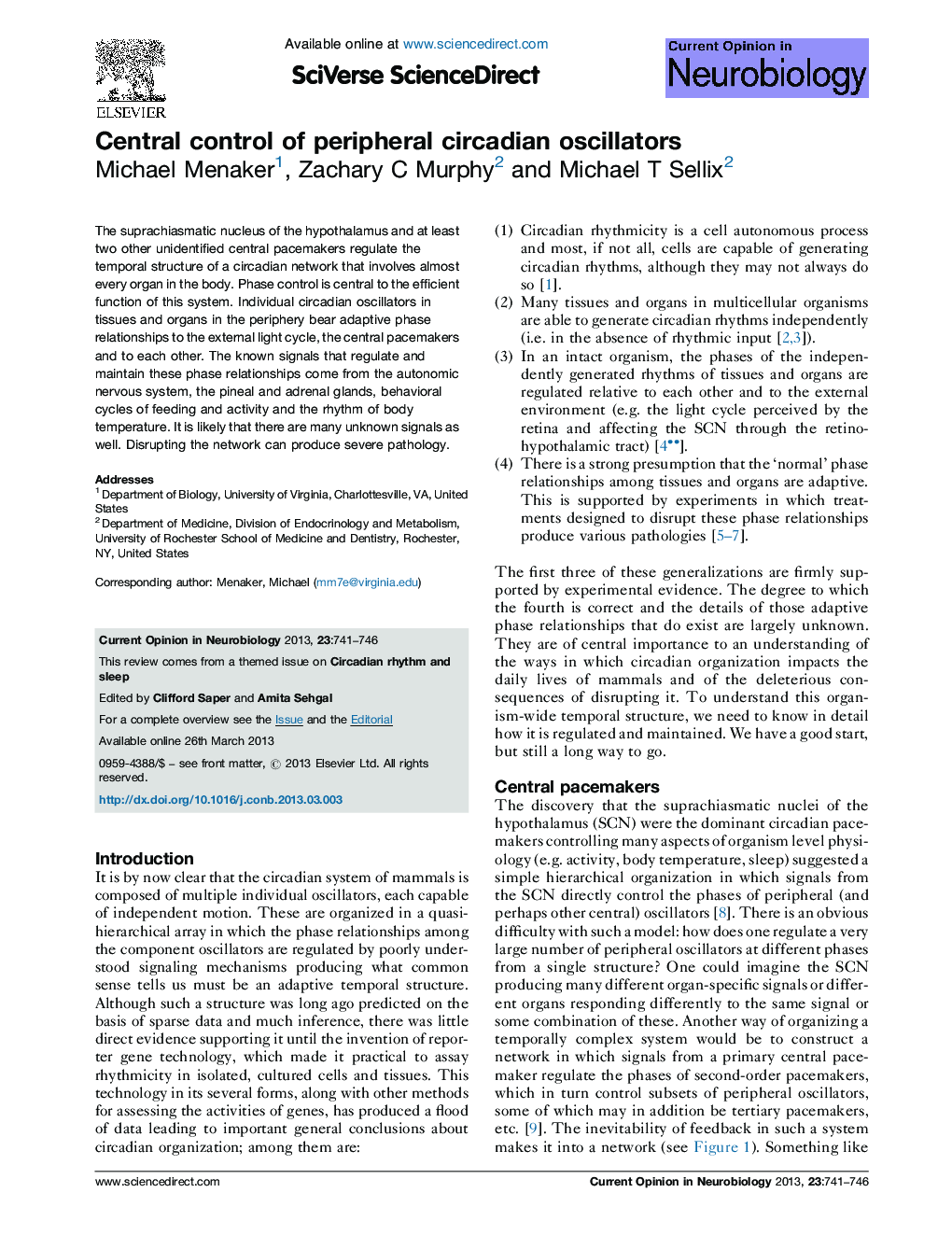| کد مقاله | کد نشریه | سال انتشار | مقاله انگلیسی | نسخه تمام متن |
|---|---|---|---|---|
| 6266590 | 1294915 | 2013 | 6 صفحه PDF | دانلود رایگان |
- Central circadian pacemakers regulate the phases of peripheral organs.
- Central pacemakers and peripheral oscillators form a network.
- The circadian network is adaptively phased primarily by the daily light cycle.
- Network phase is modulated by food, exercise, body temperature, and methamphetamine.
- Melatonin, glucocorticoids and neural inputs differentially modulate internal phases.
The suprachiasmatic nucleus of the hypothalamus and at least two other unidentified central pacemakers regulate the temporal structure of a circadian network that involves almost every organ in the body. Phase control is central to the efficient function of this system. Individual circadian oscillators in tissues and organs in the periphery bear adaptive phase relationships to the external light cycle, the central pacemakers and to each other. The known signals that regulate and maintain these phase relationships come from the autonomic nervous system, the pineal and adrenal glands, behavioral cycles of feeding and activity and the rhythm of body temperature. It is likely that there are many unknown signals as well. Disrupting the network can produce severe pathology.
Journal: Current Opinion in Neurobiology - Volume 23, Issue 5, October 2013, Pages 741-746
